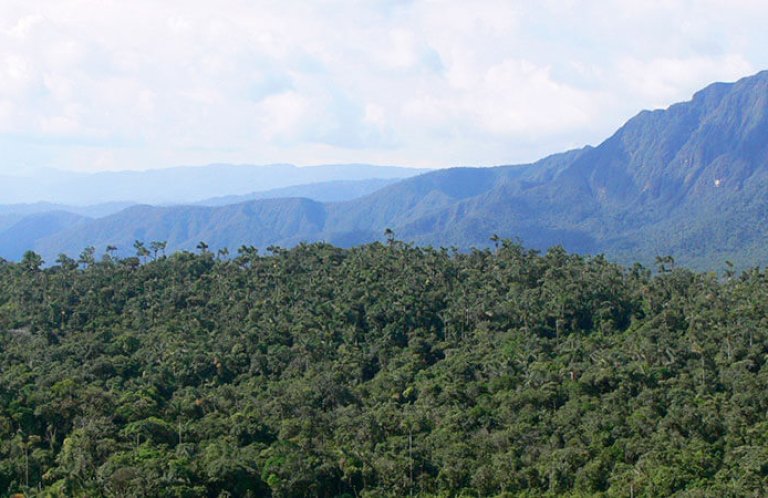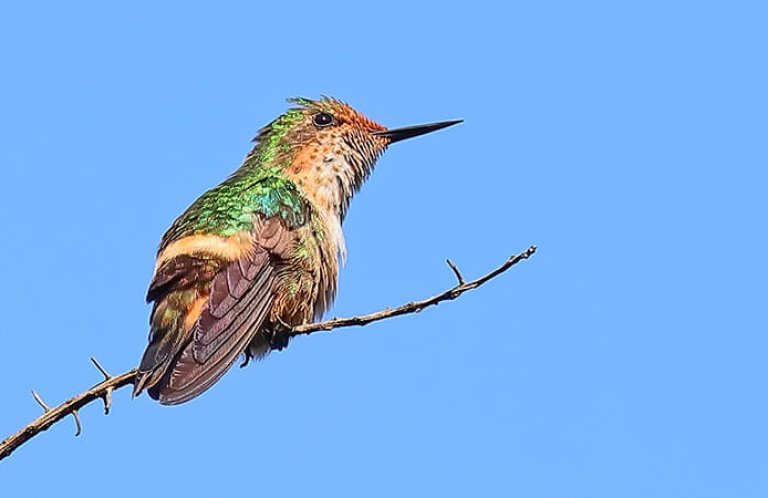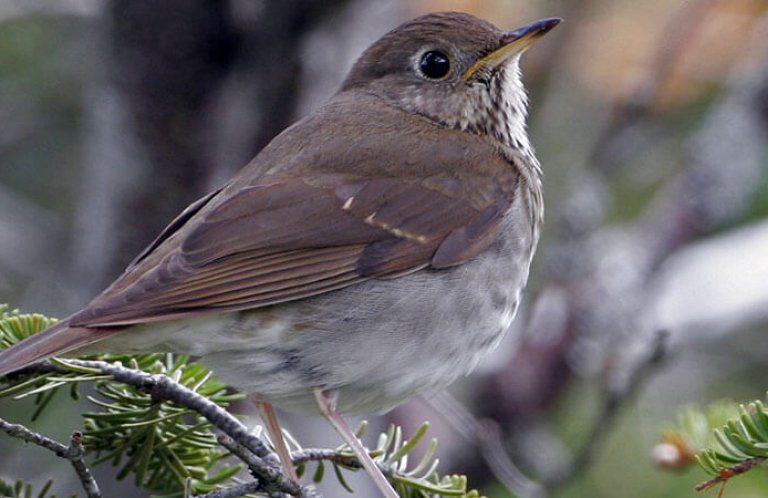Sowing Seeds for Bird Recovery
In the battle to save declining species, the shovel and greenhouse are a powerful sword and shield.
Conservation is when you leave the natural world to its own devices, right? That may be what many people think. Yet as we face invasive species, climate change, and widespread habitat loss and degradation, solutions are not so simple: More and more these days, saving imperiled species requires getting hands dirty. You could call it the power of the “green” green thumb. Humans have been sowing seeds since the dawn of civilization, but now conservationists are turning over a new leaf on age-old practices — bringing back plants once plowed under or cut down, and in some cases adding others, on protected acreage, working lands, or neglected spaces.
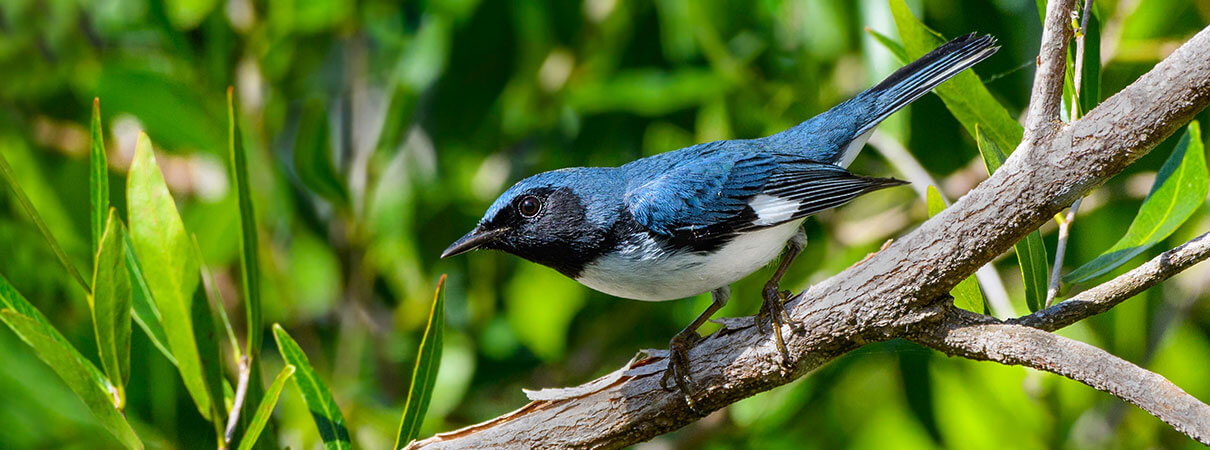
“Planting for birds” certainly pervades ABC's work across the Americas. To date, the organization and its partners have planted more than 6.8 million trees and shrubs to help bring back birds and the species sharing their habitats. And it's making an impact: From slow-growing Polylepis trees in the Andes, to endangered magnolias in the Caribbean, to nectar-producing trees valued by Neotropical migrants wintering on Central American shade-coffee farms, thoughtful planting is giving birds a helping hand.
For a Fading Comet, a Helping Hand
Every plant certainly counts in the race to save the mysterious and Endangered Gray-bellied Comet. This somber colored, fork-tailed hummingbird is known from just five locations in northern Peru. There is currently no reserve protecting this species. The sloped and scrubby habitat it favors is also home to nine other endemic birds, including the Black Metaltail hummingbird, Rufous-backed Inca-Finch, and Striated Earthcreeper. Carlos A. Soto Camacho, a reforestation coordinator for Asociación Ecosistemas Andinos (ECOAN), is one of the few people working to save the comet. He leads the ECOAN effort, supported by ABC, to grow and establish native plants important to the species in its stronghold in the Chonta Canyon, five miles from the bustling city of Cajamarca.

People living and farming in the region certainly see a lot of hummingbirds, but most don't know the comet. “It is very difficult to observe this species,” Soto Camacho explains. “In a day, we may see one individual or two. I've seen only one female in my life.” The Gray-bellied Comet's already localized habitat continues to be winnowed down by livestock overgrazing, crop agriculture, and fire-setting in an impoverished region where farmers struggle to make a living working hardscrabble soil.
For four years now, ECOAN has been leasing space on a farm, where it built a greenhouse. There, Soto Camacho and his team grow eight native plant species that provide food and nesting habitat for the comet. These include two important nectar sources: a small yellow-flowering tree called the Trumpetflower or Hada (Tecoma sambucifolia) and a pink-blossomed shrub called the Campanilla (Delostoma integrifolium), which naturally grows in humid areas bordering the nearby river. Soto Camacho and his team also grow some flowering and fruiting trees appealing to local farmers, such as the fruit-bearing Black Cherry (Prunus serotina). In the coming year, ECOAN hopes to have 20,000 to 25,000 plants in the ground, with 5,000 of those being the “incentive” plants given to farmers to encourage participation in the project.
This ECOAN effort, supported by ABC, provides paid seasonal greenhouse and planting jobs, especially during the three months when rain touches the region. That's when community members install these plants in spaces not currently used for crops or livestock.
“In the greenhouse, the work is going well,” says Soto Camacho. “With rains, the plants in the ground do well. But rains used to be more frequent and heavier. Now, when rains pass elsewhere, the plants have trouble growing.”
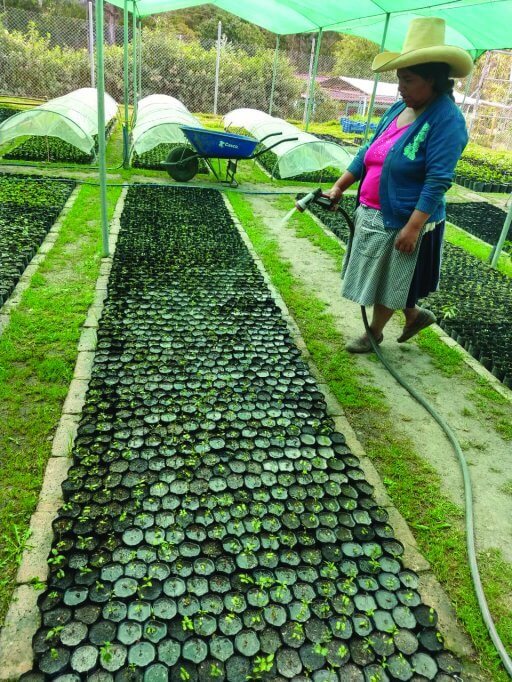
Gray-bellied Comet. Photo by ECOAN.
Compounding the tricky precipitation situation is the condition of the soil: After decades of cultivation, nutrient levels are reduced. This means that planting requires not only water but added fertilizer. “The plants need monitoring and care,” says Soto Camacho, who adds that if they are not tended, just 5 to 10 percent would survive. In the normally dry conditions, plants require two to four years of regular watering before becoming fully established. The care provided by participating local farmers greatly boosts the plants' survival rate.
Another challenge to the program is fire. “The people here believe that smoke brings rains, so after we plant, we sometimes come back and see that fire, started in nearby fields, has spread and burned down the plants,” explains Soto Camacho.
Although he frequently talks to people about their special hummingbird neighbor, Soto Camacho says it has been an uphill battle to build local support for this species and its habitat. “Fruiting plants serve the local people. But native plants, they see as having no benefit. And many people don't see the comet as any different from the other hummingbirds they see daily.”
But the comet is distinctive. In the right light, the male's tail shines an irresistible gold, and its throat flashes blue. And as it flies among the flowers, the bird feeds on different plants in different ways, probing the Hada or Trumpetflower but “robbing” nectar from other blooms by pecking a hole at a flower's base, as do perching birds called flowerpiercers.
ECOAN, ABC, and Rainforest Trust are raising funds to establish a first-ever Gray-bellied Comet reserve. Soto Camacho hopes that in the future, the community will continue to find income through jobs relating to comet conservation, including not only more habitat restoration work but increased nature tourism. And he hopes that a sense of local pride will grow around this unique bird.
“No one has done anything for the comet before,” Soto Camacho says. “We are advancing slowly. If we don't keep going, it will not survive.” As the native plants continue to grow with the help of Soto Camacho's planting team, he looks to the future. “We need to get a lot of information out to the local communities and to the nearby city,” he says. “And we need to talk to the young ones, the next generation.”
The Thrush and the Cacao Pod: A Sweet Combo
While its nesting grounds in stunted coniferous forests of New England and eastern Canada sit locked in winter cold storage, the Bicknell's Thrush is predominantly a bird of the Dominican Republic. There, few people see this brown-backed songbird as it skulks in the shadowy tropical montane forest. Yet this understated species, with its perilously small range, is now a bit of a celebrity, symbolizing a “sweet” marriage between forest conservation and the cultivation of cacao, the plant that gives us chocolate.

where sustainable cacao production can aid in its conservation.
Photo by Larry Master.
A good portion of the Bicknell's Thrush's winter range falls within the Septentrional BirdScape. This ABC-designated conservation landscape spans rugged mountains of northern Dominican Republic. There, several government and private reserves dot broad expanses of cleared pasture and cropland, along with cacao and coffee farms.
One large private reserve is named Zorzal, the Spanish word for thrush. Spanning 1,019 acres, it was established in 2012 to protect habitat for Neotropical migrants including the Bicknell's Thrush, Louisiana Waterthrush, Worm-eating Warbler, and Black-throated Blue Warbler, along with many of the country's endemic bird species, like the Antillean Piculet, Hispaniolan Parrot, and Hispaniolan Trogon.
Funds to manage and finance the reserve come from sustainable cacao production that takes place within it. For this purpose, the reserve's founders also started Zorzal Cacao, a cacao producer that practices bird-friendly cultivation such as planting native shade-tree species and leaving as much understory as possible on the landscape. Zorzal Cacao also works with local farmers to implement sustainable practices on their properties.
Zorzal Cacao has been working with the Smithsonian Migratory Bird Center (SMBC) to blend agricultural and conservation work to benefit people and wildlife, culminating in what will be the first-ever globally certified “Bird-Friendly” cacao, which should be on the market within the coming year. ABC has been supporting Zorzal Cacao in its efforts to recruit interested landowners to embrace sustainable farming and processing practices.

When grown in shade, cacao cultivation, like shade-coffee production, can help to effectively add and conserve canopy trees valued by wildlife. But depending upon the farmer and farm conditions, this is not always feasible. So, SMBC and Zorzal Cacao also work with farmers to offset cleared “sun” cacao acreage with equal areas of protected forest. With these set-aside acres, these farmers can also be certified as “Bird-Friendly.”
This growing effort puts working lands to work for wildlife, which bodes well for the region's birds. “We're cobbling together this mosaic of private lands that are sustainably managed, with shade cacao being a part of this, in the context of linking to existing protected areas,” says Marci Eggers, ABC's Director of Migratory Bird Habitats in Latin America and the Caribbean. “If we can keep finding ways to make productive landscapes bird-friendly, it can really have an impact on the entire BirdScape.”
Combining both strict protection and sustainable production, the Zorzal Reserve provides a great example for other projects. The goal there is to have 30 percent of the property under sustainable cacao cultivation. According to the company's founder Charles Kerchner: “Our model is to use 30 percent of the land to finance 100 percent of it. That means 70 percent can be ‘forever wild.'”
A Future Rising From the Ashes
Conservation in the 21st century calls for norm-bending vision set on an uncertain future. Take northern Minnesota: There, low, wet forested areas are often dominated by mature Black Ash stands, a habitat now in the crosshairs of the Emerald Ash Borer — an introduced green beetle that drills into ash trees and kills them from within. First detected in the Detroit area in 2002, this Asiatic beetle now occurs in 36 states, including Minnesota, where it is marching north and west, likely aided by warmer winters. Often, most mature ash trees die within a few years of this beetle's arrival.

Many Black Ash-dominated forests in Minnesota harken back to the 1930s, the decade dominated by the Dust Bowl. Then, prolonged drought allowed lowland tree species such as the Black Ash and American Elm to take hold in places that might otherwise have been too wet for tree growth. When introduced Dutch Elm Disease swept through Minnesota in the 1970s and 1980s, these forests were left almost pure Black Ash. Today, these areas provide important wildlife habitat for woodland birds including the Ovenbird and Red-eyed Vireo, and also for brush-nesting species with fledged young that feed in adjacent woodlands, such as the Golden-winged Warbler. The oldest trees, now about a century old, provide cavities where Wood Ducks nest and weasels called Fishers and American Martens den.
Anticipating rapid loss of this habitat as the borers advance, ABC and partners are trying to keep a step ahead so that bottomland areas remain forested if the ashes die off. As part of the Great Lakes Restoration Initiative, a federal grant program established in 2009 to accelerate efforts to protect and restore the Great Lakes, ABC secured a grant to work with Carlton County, the Fond du Lac Band of Lake Superior Chippewa, and the Minnesota Department of Natural Resources to plant 60,000 native trees other than ash on 100 acres of ash-dominated sites within the Lake Superior watershed. Selected planting sites are on land with open growing space left after recent timber harvests, storm blow-downs, or where trees are dying of old age.
“So far, we've planted four sites and we're trying to find some more for next spring,” says Duane Fogard, ABC's Private Lands Forester for Minnesota. “We've already planted 36,300 trees; that means that we're 60 percent done.
“We're trying to diversify these stands,” explains Fogard. “If the ash trees were all killed at once, the water table would probably come up. The hope is to keep forest on the sites, by introducing some other species that will provide a seed source to replace the Black Ash. Most of these types of trees occur around here,” he says.

For this effort, replacement species include Burr Oak, White Spruce, Northern White-cedar, Yellow Birch, Balsam Fir, Silver Maple, and a tree currently found to the south that is anticipated to march north with warming winters. “Swamp White Oak is not native here but is found 200 miles to the south,” Fogard says. “We're sort of experimenting here with assisted migration,” he adds.
The work involves careful planning and several stages of execution. Mark Westphal, the forester for the Carlton County Land Department, explains how the collaboration has worked in his area: “Duane got the trees from the Minnesota Department of Natural Resources when they became available. Prior to planting our site, the Carlton County Land Department (my boss Greg and myself) spent copious hours mowing the planting area to give the tree seedlings a fighting chance of establishing themselves,” he adds. When the best time for spring planting arrived in late April and early May, Westphal came back with a tree-planting crew. He and colleagues followed the crew, marking the hundreds of saplings with flags. “Then we came back after the fact with tree tubes and cages,” Westphal says, “to protect the young trees from deer.”
A year later, most of the trees are well established. Westphal believes this joint tree-planting campaign began not a moment too soon. “We now have Emerald Ash Borers approximately 8 miles as the crow flies from that location,” he says. This means that in a few years, many of the Black Ash trees may be dead. “It's sad and initially you want to put your head in the sand. But our collaboration gives me hope. We're a small county with a small land base. Being able to have groups like ABC come in to facilitate this tree-planting is important. It makes economic and ecological sense to us. And we think it will make a difference.”
ABC thanks George and Cathy Ledec, Kathleen Burger, Andrew Goodwin, and Larry Thompson for supporting Gray-bellied Comet habitat restoration efforts.
ABC's work in the Septentrional BirdScape has been generously supported by the U.S. Fish and Wildlife Service and the Neotropical Migratory Bird Conservation Act grant program; Environment and Climate Change Canada; Richard and Nancy Eales; and Andrew and Patricia Towle.
The Black Ash project is funded by a Great Lakes Restoration Initiative grant through the U.S. Department of Agriculture, Forest Service, and the U.S. Environmental Protection Agency.






































